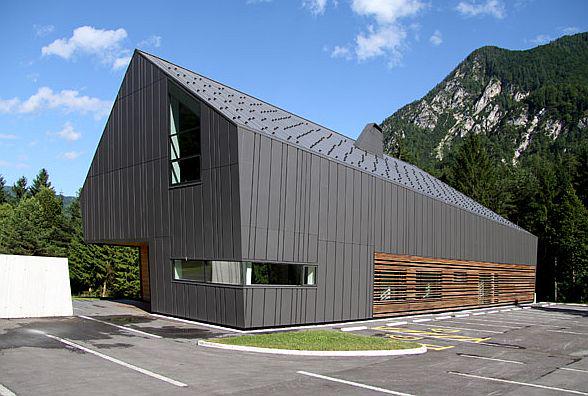
An unusual building stands just outside the idyllic village of Mojstrana in Slovenia's Julian Alps. With its dark, angular walls that meet at acute angles, the structure is unmistakably modern. However, the architecture also references another type of structure commonly seen in the Slovenian Alps: the mountain refuge – a small building that provides shelter to mountaineers at night or during inclement weather.
The shape of the building is appropriate: It houses the Slovenian Alpine Museum, devoted to the country’s mountaineering tradition. Mountain climbing has a long history in Slovenia (many climbers were the first to conquer the highest peaks of the Himalaya and the Andes), and despite the museum's modern home, the idea for such a museum dates back more than a century. It was first proposed in 1901, but subsequent wars and political turmoil prevented the dream from becoming a reality.
In the 1970s, an enthusiast named Avgust Delavec established a collection of mountaineering items dating back to the very beginnings of mountain exploration in Slovenia. In 1984, the collection got its first permanent home in an old Mojstrana house. The surroundings were modest, but items from the past and the present of Slovenian mountaineering were finally made available to the general public.
After Slovenia's independence, the Slovenian Mountaineering Society, along with local authorities, decided to replace the makeshift exhibit with a state-of-the-art museum. They chose a thoroughly modern design for the building and used a number of high-tech devices to bring the mountain experience closer to visitors.
With the help of EU funds, the museum opened its doors in 2010. Modern technology enables visitors to experience the fury of a mountain storm as heard and felt from a mountain refuge. They can learn about life in a mountain hut and familiarize themselves with the rules governing hiking above the tree line. They can also get acquainted with the difficult and often dangerous work of Slovenia’s volunteer mountain rescue teams.
The museum encourages a hand-on approach to learning. Children can touch rocks, tents, climbing equipment, and even taxidermied animals. Meanwhile, their parents can browse through the museum's vast collection of printed materials, photographs, and other artifacts that give some idea of the deep bond that the Slovenian people have always had with their mountains.
And many pioneering mountaineers and skiers had come from the village of Mojstrana. The Slovenian Alpine Museum ensures that the small village, nestled below Slovenia's iconic Mount Triglav, becomes a required stop for those wishing to explore Slovenia's Alpine splendors.


































































